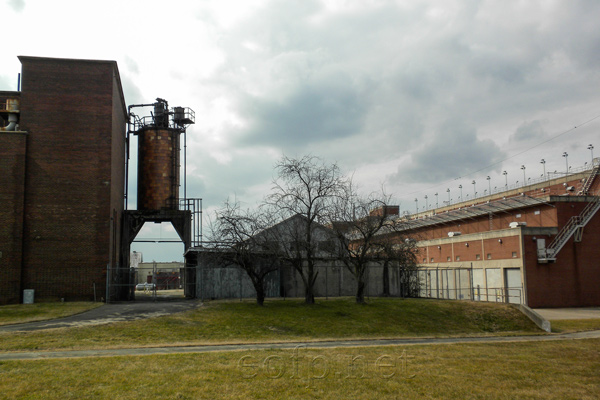9/27/2013
Burlington North Carolina
A closed textile mill in Burlington North Carolina
The textile industry in North Carolina began to grow in the 1800s largely powered by swift flowing streams in the piedmont region. As steam and electric power supplanted water power in the early 1900s, the mills moved away from streams and rivers and began to cluster in cities near railroads which brought supplies of cotton and coal and carried finished products off to markets. In the 1950s the mills began to further consolidate around the new freeway system. Burlington was at the heart of both the rail and freeway systems and as a result became one of the biggest centers of textile manufacturing in the United states from the 1920s-1980s. Burlington was specifically known for synthetic fiber weaving and was for a while "The Hosiery(panty hose)Center of the South." Since the 1990s owners of textile companies and retailers like Wall Mart and the Gap have moved pretty much all textile manufacturing from the United States to countries like China and Bangladesh. Today vast textile factories sit empty around the eastern and southern edges of Burlington. Most of the closed mills are still in good condition and secured but unused. Burlington's location in the heart of the North Carolina metro corridor has helped protect the city from the worst effects of the mill closures.

Burlington North Carolina Cum Park Plaza
All content on these pages Copyright Mark Hedlund 2012-2019. All rights reserved. Use in school projects and with links on social media is always okay. Please send me an email to request permission for any other use: hedlunch@yahoo.com Non-exclusive commercial publication rights for most photos is $25 per image.

